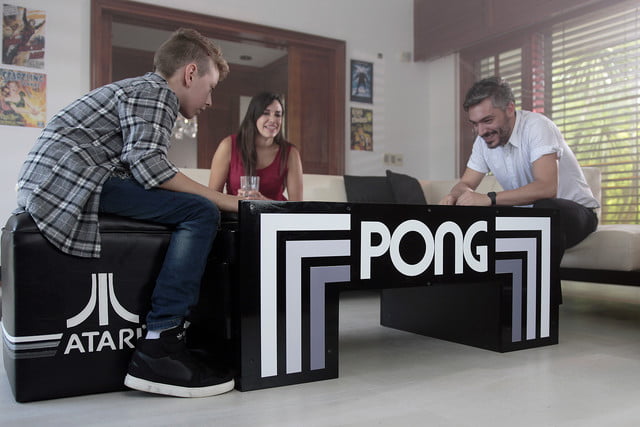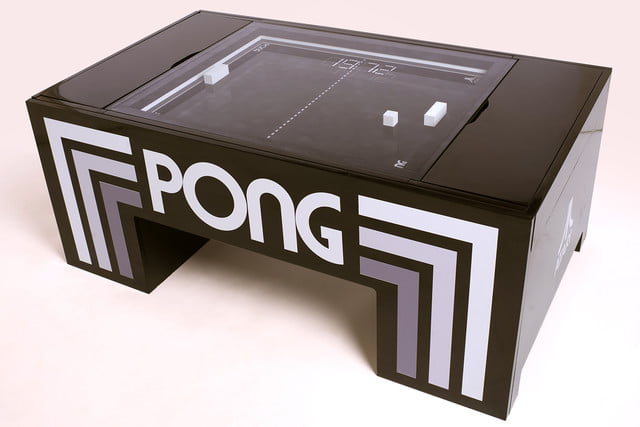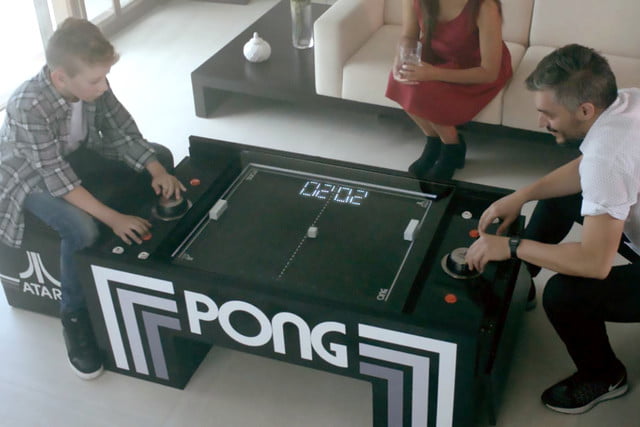Back in the halcyon days of mid-2016, we published an article about a bunch of friends who had banded together to create a largely mechanical, coffee table-sized version of Atari’s legendary 1970s game Pong.
As it turns out, we weren’t the only ones who did. In fact, the story went viral, and Gerardo Orioli and his Uruguayan cohorts were quickly bombarded with requests from people wanting to deck their man caves (and presumably a few woman caves, too) with their own copies.
Jump forward nearly two years, and they are ready to deliver on that demand, as evident from their presence at this year’s CES.
“After the viral success, we decided to move forward with the next set of challenges,” Orioli told Digital Trends last year. “We secured an investor to further our research, and obtained an exclusive license with Atari. We built more prototypes and perfected the functionality and performance in our design. Now we are ready for the next stage.”
The company launched the nostalgia-inducing product on Kickstarter in late-March, quickly garnering more than $300,000 in crowdfunding revenue — nearly 30 percent more than the initial funding goal and enough to begin mass production.
As you can see from the video at the top of this page, the concept is pretty darn rad. The original used magnets and metal bars for the movement of the game pieces, while scoring was carried out using Arduino controllers and simple LED displays. The Kickstarter version builds on that design but adds an extra level of polish.
Pong being the most pick-and-play game this side of Tetris, users can expect a fun, straightforward gaming experience — although, from the sound of things, putting the physical table together wasn’t always so easy.
“Our biggest challenge was to find the right balance between the forces that re-create the 2D movement and illusion of the game,” Orioli continued. “We had to deal with two different kinds of forces: Magnetic and friction. In order to control them, we had to variate the motor’s speeds and accelerations to achieve the right balance; otherwise, the ‘ball’ would fly out of reach. A lot of research was put into trying different motors and different setups, and into choosing the right magnets and surfaces.”
The company is in the final stages of production and expects to start shipping the final product to backers in March. Additional retail units will be sold during the first quarter of 2018 for $2,800.
“We’ve gotten a lot of interest from people,” Walter Nogara, one of the original team members behind the table, said at CES. “From the Kickstarter era until now, when we have the real product here, it’s been quite the experience.”







